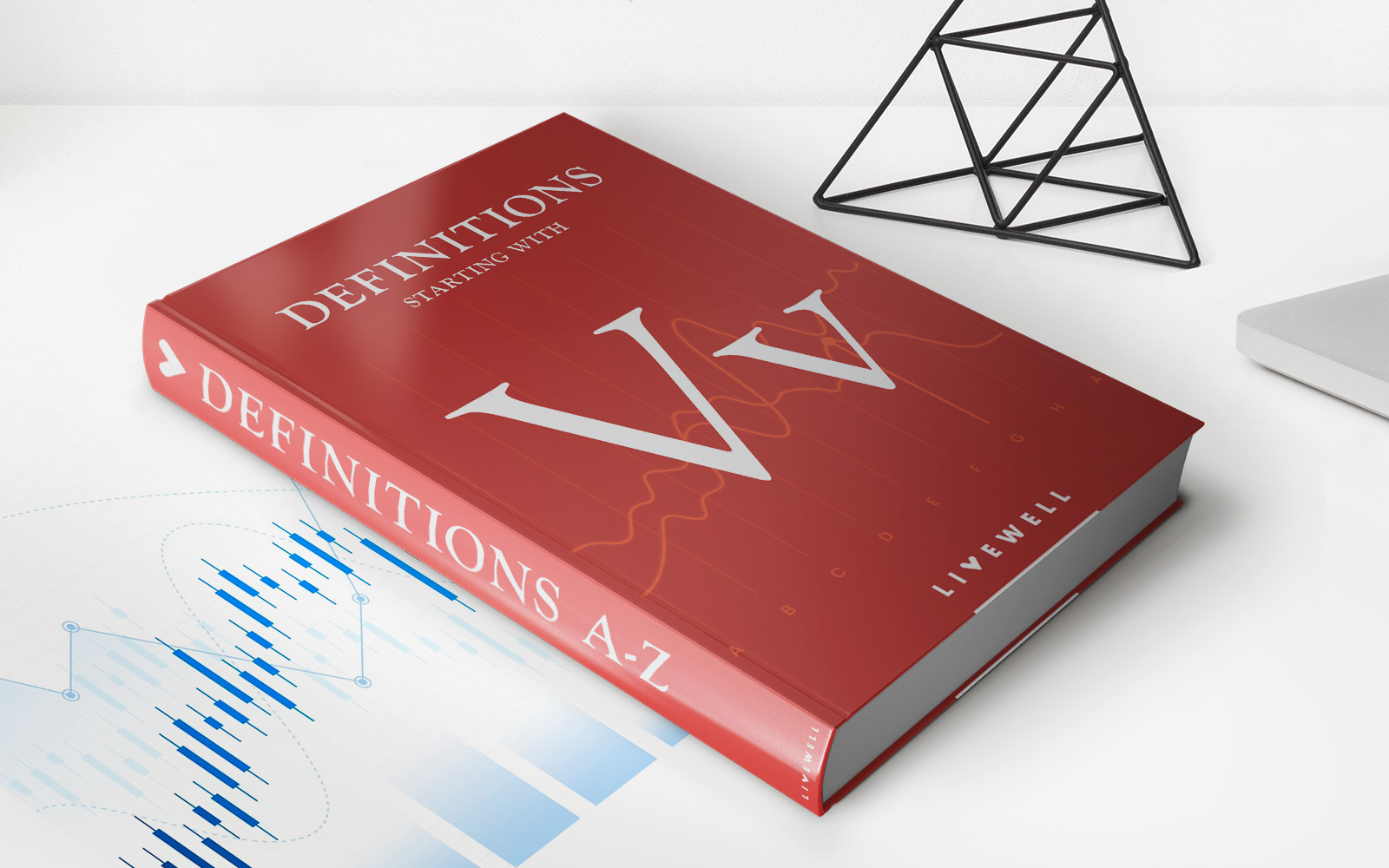Home>Finance>What Terms Does A Financial Institution Specify For Certificates Of Deposit


Finance
What Terms Does A Financial Institution Specify For Certificates Of Deposit
Modified: December 29, 2023
Discover the terms set by financial institutions for certificates of deposit in the finance industry. Learn how to maximize your savings with these investment options.
(Many of the links in this article redirect to a specific reviewed product. Your purchase of these products through affiliate links helps to generate commission for LiveWell, at no extra cost. Learn more)
Table of Contents
- Introduction
- Overview of Certificates of Deposit
- Types of Certificates of Deposit offered by Financial Institutions
- Terms and Conditions for Certificates of Deposit
- Interest Rates and APYs for Certificates of Deposit
- Minimum Deposit Requirements for Certificates of Deposit
- Early Withdrawal Penalties for Certificates of Deposit
- Renewal Options for Certificates of Deposit
- FDIC Insurance Coverage for Certificates of Deposit
- Comparison of Certificates of Deposit across Financial Institutions
- Conclusion
Introduction
Welcome to the world of finance, where various institutions offer a wide range of products and services to help you achieve your financial goals. One of these offerings is the certificate of deposit, commonly known as a CD. If you are looking for a safe and secure investment option with guaranteed returns, a certificate of deposit may be the perfect choice for you.
In this article, we will provide an in-depth look into the terms and conditions associated with certificates of deposit offered by financial institutions. By understanding these details, you can make informed decisions about where to invest your hard-earned money.
Whether you are a seasoned investor or just starting to explore your options, it is vital to understand the ins and outs of certificates of deposit. This will empower you to choose the right financial institution and the most suitable CD type for your needs.
So, let’s dive into the world of certificates of deposit and discover the terms and conditions that financial institutions specify for these investment vehicles. By the end of this article, you will have a clear understanding of the various aspects that come into play when investing in a certificate of deposit.
Overview of Certificates of Deposit
Certificates of deposit (CDs) are a type of financial instrument offered by banks and credit unions. They are considered to be a safe and low-risk investment option. When you invest in a CD, you essentially lend your money to the financial institution for a specific period, known as the term of the CD. In return, the institution pays you interest on your deposit.
CDs are known for their fixed interest rates, which means the rate remains constant throughout the term of the CD. This provides investors with a predictable and guaranteed return on their investment. The terms of CDs typically range from a few months to a few years, allowing individuals to choose a term that aligns with their financial goals and time horizon.
One of the key advantages of CDs is their low-risk nature. They are insured by the Federal Deposit Insurance Corporation (FDIC) for banks or the National Credit Union Administration (NCUA) for credit unions, up to the maximum allowable limit. This insurance coverage provides peace of mind to investors, knowing that even if the financial institution fails, their principal and interest earnings will be protected.
While CDs offer stability and security, they may have lower returns compared to other investment options. This is because they are designed to be conservative investments, providing a fixed rate of return over a specific period. However, CDs can still be a valuable addition to an investment portfolio, especially for those seeking stability and protection of their principal.
Now that we have a general understanding of what certificates of deposit are, let’s explore the different types of CDs offered by financial institutions.
Types of Certificates of Deposit offered by Financial Institutions
Financial institutions offer a variety of certificate of deposit (CD) options to cater to the diverse needs and preferences of investors. Here are some common types of CDs that you may come across when exploring your investment options:
- Traditional CDs: Traditional CDs have fixed interest rates and terms ranging from a few months to several years. The interest rate remains constant throughout the term of the CD, providing a predictable return on investment.
- High-Yield CDs: High-yield CDs typically offer higher interest rates compared to traditional CDs. They are often available for longer terms and may require a higher minimum deposit. These CDs can be a good choice for investors looking to maximize their returns.
- Jumbo CDs: Jumbo CDs are CDs with a higher minimum deposit requirement, usually starting at $100,000 or more. In return for depositing a larger sum of money, investors may receive higher interest rates. Jumbo CDs are suitable for individuals with substantial financial resources who can afford a larger initial investment.
- Callable CDs: Callable CDs give the financial institution the option to “call back” or redeem the CD before its maturity date. While these CDs may offer higher interest rates initially, the investor should be aware of the possibility of early redemption and the impact it may have on their investment plans.
- Bump-Up CDs: Bump-up CDs allow investors to request a higher interest rate if rates in the market increase during the term of the CD. This option provides flexibility for investors who want to take advantage of rising interest rates without committing to a long-term CD.
- Step-Up CDs: Step-up CDs have predetermined interest rate increases at specified intervals during the term. This feature allows investors to benefit from higher interest rates as the CD matures, providing potential higher overall returns.
- No-Penalty CDs: No-penalty CDs offer flexibility for investors who may need early access to their funds. These CDs allow investors to withdraw the full amount before the maturity date without incurring any penalties.
It’s important to carefully consider your investment goals, risk tolerance, and liquidity needs when choosing the right type of certificate of deposit. Now that we have explored the various types of CDs available, let’s move on to understanding the terms and conditions associated with these investment vehicles.
Terms and Conditions for Certificates of Deposit
When investing in a certificate of deposit (CD), it is crucial to familiarize yourself with the terms and conditions set by the financial institution. These terms outline important details that govern your investment, including the duration, interest rate, and any associated fees or penalties. Here are some key terms and conditions to consider:
- Term: The term refers to the length of time that your money will be invested in the CD. Terms can vary from a few months to several years, and the interest rate may vary depending on the term length. It’s important to choose a term that aligns with your financial goals and time horizon.
- Interest Rate: The interest rate is the percentage that the financial institution will pay you for holding the CD. Typically, CDs offer fixed interest rates, meaning the rate remains the same throughout the term. However, some CDs may feature variable or adjustable interest rates.
- Annual Percentage Yield (APY): The APY is a representation of the annualized rate of return, taking into account the compound interest over the term of the CD. It is important to compare the APYs of different CDs to understand the potential earnings on your investment.
- Minimum Deposit Requirement: Financial institutions typically set a minimum deposit requirement for CDs. This is the minimum amount of money that you must invest to open a CD. Minimum deposit requirements can vary, so it’s important to review the requirements of different CDs.
- Early Withdrawal Penalties: CDs are designed to be held until maturity, and withdrawing funds before the maturity date may result in penalties. The financial institution may impose a penalty, which is usually a percentage of the interest earned or a specified number of months’ worth of interest. It’s essential to understand the early withdrawal penalties before investing in a CD.
- Renewal Options: At the end of the CD term, there are typically renewal options available. These options may include automatic renewal at the same term and interest rate, the ability to change the term or interest rate, or the option to withdraw the funds without penalty. Review the renewal options offered by the financial institution to ensure they align with your investment goals.
- FDIC Insurance Coverage: CDs offered by banks are federally insured by the Federal Deposit Insurance Corporation (FDIC) up to the maximum allowable limit per depositor. This insurance coverage protects your investment in case the financial institution fails.
Understanding the terms and conditions of a CD is crucial for making informed investment decisions. It’s recommended to carefully read the terms and ask any questions to the financial institution before committing to a CD. By doing so, you can ensure that the CD aligns with your investment objectives and financial needs.
Interest Rates and APYs for Certificates of Deposit
When investing in a certificate of deposit (CD), it’s important to pay attention to the interest rates and Annual Percentage Yields (APYs) offered by financial institutions. These factors play a crucial role in determining the potential return on your investment. Let’s take a closer look at interest rates and APYs for CDs:
Interest Rates: CD interest rates are typically fixed for the duration of the term. This means that the rate remains the same regardless of any changes in the market or economy. The interest rate is expressed as an annual percentage and is applied to the principal amount of your investment. It’s important to compare interest rates across different CDs to identify the most competitive offers.
Annual Percentage Yield (APY): The APY of a CD is a representation of the total amount you will earn on your investment over a year, taking into account the effect of compounding. Compounding is the process of earning interest on both the initial deposit and any accumulated interest. The APY is a more accurate measure of the CD’s actual return compared to the stated interest rate.
Financial institutions typically calculate the APY using the following formula:
APY = (1 + (interest rate/compounding period))^(compounding periods per year) – 1
The compounding period can be daily, monthly, quarterly, or annually, depending on the terms of the CD. The higher the compounding frequency, the greater the impact on the overall APY.
For example, let’s say you invest $10,000 in a CD with an annual interest rate of 2% compounded annually. After one year, using the formula above, the APY would be approximately 2.02%. This means that at the end of the year, your investment would have grown to $10,202.
It’s important to note that the APY takes into account the compounding effect and provides a more accurate representation of the CD’s return. When comparing CDs, focusing on the APY can help you evaluate the potential earnings on your investment.
Interest rates and APYs can vary among financial institutions and may depend on factors such as the term length, amount of investment, and market conditions. It’s advisable to shop around and compare rates from different banks or credit unions to ensure you’re getting the most competitive offer.
By choosing a CD with a higher interest rate and APY, you can maximize your returns and potentially earn additional income on your investment. However, it’s important to consider other factors such as the minimum deposit requirement, term length, and any applicable fees or penalties before making a decision.
Now that we understand how interest rates and APYs work for CDs, let’s delve into the minimum deposit requirements associated with these investment vehicles.
Minimum Deposit Requirements for Certificates of Deposit
When considering a certificate of deposit (CD) as an investment option, it’s important to be aware of the minimum deposit requirement set by financial institutions. The minimum deposit is the amount of money you need to initially invest in order to open a CD. Here’s what you need to know about minimum deposit requirements:
Varying Minimums: Different financial institutions have different minimum deposit requirements for their CDs. While some may have low minimums, such as $500 or $1,000, others may require a larger initial deposit, such as $10,000 or even more. It’s essential to research and compare the minimum deposit requirements of various banks or credit unions to find an option that aligns with your budget.
Impact on Interest Rates: In some cases, the minimum deposit requirement may influence the interest rate offered by the financial institution. Higher initial deposits may result in higher interest rates or more favorable terms. However, this is not always the case, as some financial institutions offer competitive rates regardless of the initial deposit amount. It’s important to balance your desired investment amount with the interest rates available as you explore your CD options.
Dividing Investments: If you have a significant amount of money to invest but are hesitant to put it all in a single CD, you have the option to divide your investment across multiple CDs. For example, instead of investing $10,000 in one CD, you could invest $2,500 in four separate CDs with varying terms or interest rates. This strategy allows you to diversify your investment and potentially take advantage of different CD options.
Accessible for Different Budgets: While some individuals may have the means to invest a significant amount, others may have limited funds available. The good news is that CDs are accessible to investors with varying budget sizes. By researching different financial institutions and their minimum deposit requirements, you can find a CD that suits your investment capabilities.
It’s important to note that the minimum deposit requirement is distinct from the minimum balance requirement. The minimum balance requirement refers to the minimum amount of money that must be maintained in the CD to avoid fees or penalties. Make sure to review both the minimum deposit and minimum balance requirements when considering a CD.
Understanding the minimum deposit requirement is crucial for selecting the right CD for your financial goals. By carefully considering your investment budget and comparing options, you can find a CD that allows you to grow your money at a comfortable investment level.
Now that we’ve explored minimum deposit requirements, let’s discuss the penalties associated with early withdrawal from a certificate of deposit.
Early Withdrawal Penalties for Certificates of Deposit
When investing in a certificate of deposit (CD), it’s crucial to be aware of the potential penalties associated with early withdrawal. CDs are designed to be held until maturity, but there may be circumstances where you need to access your funds before the agreed-upon term. Here’s what you need to know about early withdrawal penalties:
Penalty Structure: Financial institutions impose penalties to discourage investors from withdrawing their funds before the CD’s maturity date. These penalties vary among institutions but typically involve forfeiting a portion of the interest earned or incurring a specified number of months’ worth of interest as a penalty.
Percentage or Months: Early withdrawal penalties can either be a percentage of the interest earned or a specified number of months’ worth of interest. For example, a penalty of 3% of interest earned means that if you earned $100 in interest, you would be penalized $3 for early withdrawal. Alternatively, a penalty of three months’ worth of interest on a $1,000 investment with a 2% interest rate would result in a $5 penalty ($1,000 x 0.02 x 3).
Varied Penalty Structures: The penalty structure for early withdrawal can differ among financial institutions and even among different CD products from the same institution. It’s crucial to carefully review the terms and conditions of the specific CD to understand the penalty structure and its potential impact on your investment.
Impact on Returns: Early withdrawal penalties can significantly impact the overall return on your CD investment. Withdrawing funds before the maturity date means you will not earn the full expected interest, potentially reducing your returns. It’s important to consider the potential penalties when evaluating the benefits of early access to your funds.
Exceptions: Some financial institutions may provide exceptions that allow for penalty-free withdrawals in certain circumstances. For example, a common exception is allowing penalty-free withdrawals in the event of the account holder’s death or if the account holder becomes permanently disabled. It’s important to inquire about any potential exceptions or circumstances that may exempt you from early withdrawal penalties.
Before investing in a CD, it’s crucial to assess your financial situation and determine if you can commit to keeping your funds locked for the full term. If there is a possibility that you may need to access the funds before the maturity date, it may be wise to explore alternative investment options that offer more liquidity.
By understanding the potential penalties associated with early withdrawal, you can make an informed decision about investing in a CD and ensure that it aligns with your financial needs and goals.
Now that we have explored early withdrawal penalties, let’s discuss the renewal options available for certificates of deposit.
Renewal Options for Certificates of Deposit
When your certificate of deposit (CD) reaches maturity, you have various renewal options available to continue growing your investment. Renewal options allow you to make decisions about the future of your CD investment. Here are some common renewal options offered by financial institutions:
Automatic Renewal: Many financial institutions offer automatic renewal for CDs. When your CD matures, it will be automatically rolled over into a new CD with the same term length as the original. The interest rate on the new CD may be the prevailing market rate at the time of renewal. Automatic renewal provides convenience and ensures that your funds continue to earn interest without any action required on your part.
Change Term Length: Some financial institutions allow you to change the term length of your CD upon renewal. This flexibility allows you to adjust your investment strategy based on current market conditions or your financial goals. For example, if interest rates have risen since you opened the CD, you may choose to renew for a shorter term in anticipation of higher rates in the future.
Change Interest Rate: In some cases, you may have the option to negotiate a new interest rate for your renewed CD. This typically occurs when market rates have changed significantly since you opened the CD. By negotiating a new interest rate, you may be able to secure a higher rate and potentially increase your investment’s earning potential.
Withdraw Funds without Penalty: Upon maturity, you may choose to withdraw your funds without incurring any penalties. This option is ideal if you no longer want to continue with the CD or if you need immediate access to the funds. However, keep in mind that withdrawing your funds may mean forfeiting the interest earned up to that point.
Additional Deposits: Some financial institutions allow you to add additional funds to your CD at the time of renewal. This option allows you to continue growing your investment while taking advantage of the existing terms and interest rates.
Considerations for Renewal: When deciding on a renewal option, it’s essential to carefully evaluate your investment goals and assess the current market conditions. Consider factors such as interest rate trends, your liquidity needs, and your overall investment strategy. By thoroughly reviewing your options, you can make an informed decision that aligns with your financial objectives.
It’s important to note that financial institutions may provide different renewal options, and the terms and conditions may vary. Before the maturity date of your CD, reach out to your financial institution to discuss the available renewal options and any requirements or procedures involved.
Renewal options for CDs provide flexibility and allow you to continue growing your investment. By understanding the available options and considering your financial goals, you can make informed decisions that maximize the potential returns on your CD investment.
Now that we have explored renewal options, let’s discuss the FDIC insurance coverage for certificates of deposit.
FDIC Insurance Coverage for Certificates of Deposit
When investing in a certificate of deposit (CD), one of the key factors to consider is the level of protection provided by the Federal Deposit Insurance Corporation (FDIC). The FDIC is an independent government agency that provides insurance coverage for deposit accounts at member banks. Here’s what you need to know about FDIC insurance coverage for certificates of deposit:
Protection of Deposits: The FDIC insures deposits up to $250,000 per depositor, per insured bank. This means that if your CD is held at an FDIC-member bank and the bank fails, your deposit, including principal and accrued interest up to $250,000, is protected. This insurance coverage provides peace of mind and helps safeguard your investment against the risk of bank failure.
Multiple Accounts and Ownership Categories: FDIC insurance coverage is per depositor, per insured bank. It’s important to note that different ownership categories are treated separately for insurance purposes. For example, if you have individual accounts, joint accounts, and accounts held in different capacities (such as a trust account), each category is entitled to separate insurance coverage of up to $250,000. This means that you can potentially have more than $250,000 in total CD deposits insured, depending on the ownership categories and number of banks involved.
Insurance Limitations: While FDIC insurance provides significant protection, it’s important to be aware of the limitations. The $250,000 insurance limit applies to each depositor, per insured bank, per account ownership category. If you have deposit accounts totaling more than $250,000 in one bank, it’s advisable to consider spreading your funds across multiple banks or adjusting account ownership categories to maximize your insurance coverage.
Beyond the Insurance Limit: If you have CD deposits exceeding the $250,000 insurance limit at one bank, the amount above the limit will not be insured and may be at risk in the event of a bank failure. It’s important to assess your deposit levels and the insurance coverage available to ensure the safety of your funds. Taking appropriate steps, such as diversifying your deposits among different banks or utilizing different ownership categories, can help mitigate risk.
FDIC Membership: Not all banks are FDIC members, and it’s crucial to verify if the financial institution where you plan to open a CD is FDIC insured. The FDIC logo displayed on the bank’s website or the “Member FDIC” statement indicates its membership. If a bank is not FDIC insured, your deposits may not be protected by FDIC insurance, and it’s important to assess the alternative deposit insurance coverage available, if any.
By understanding the FDIC insurance coverage for certificates of deposit, you can make informed decisions about where to invest your funds. The insurance protection provided by the FDIC helps ensure the safety and security of your CD investment, offering valuable peace of mind.
Now that we have explored FDIC insurance coverage, let’s move on to the comparison of certificates of deposit across different financial institutions.
Comparison of Certificates of Deposit across Financial Institutions
When considering a certificate of deposit (CD) investment, it’s important to compare offerings from different financial institutions to find the option that best meets your needs. Here are some factors to consider when conducting a comparison:
Interest Rates: Interest rates can vary among financial institutions and can have a significant impact on your CD’s potential return. Compare the rates offered by different banks or credit unions to identify the most competitive rates available. Keep in mind that rates may vary based on the term length, minimum deposit amount, and overall market conditions.
Terms and Maturity: CD terms can range from a few months to several years, and it’s important to choose a term that aligns with your financial goals and time horizon. Compare the terms offered by different institutions to find one that suits your investment needs. Additionally, consider how the CD matures – whether it automatically renews, allows changes in term or interest rate, or offers the option to withdraw funds penalty-free.
Minimum Deposit Requirements: Financial institutions may have different minimum deposit requirements for their CDs. Assess your investment budget and find an institution that aligns with your initial deposit capabilities. Take note that some institutions may offer higher interest rates or better terms for larger deposits, so consider the relationship between deposit size and potential gains.
Early Withdrawal Penalties: Understand the penalties associated with early withdrawal from a CD at each financial institution. Compare the penalty structures and assess how they may impact your investment if you need to access your funds before the CD’s maturity date. Look for institutions with more lenient penalty structures if you anticipate the possibility of needing early access to your funds.
FDIC Insurance: Ensure that the financial institutions you are considering for your CD investment have FDIC insurance coverage. The protection offered by the FDIC provides peace of mind and safeguards your investment against the risk of bank failure. Verify that the institutions are FDIC members and understand how the insurance coverage applies to your deposits.
Additional Features: Consider any additional features or benefits offered by different financial institutions. Some institutions may provide perks such as loyalty bonuses, special promotions, or enhanced customer service. Evaluate these extras and determine if they add value to your overall CD investment.
By comparing certificates of deposit across different financial institutions, you can identify the most favorable terms, interest rates, and overall benefits for your investment. This research allows you to make an informed decision that aligns with your financial goals and preferences.
Take your time to thoroughly review each institution’s offerings, their reputations, and any customer reviews or ratings. This comprehensive evaluation will help you select a CD that meets your financial objectives and provides a secure and rewarding investment opportunity.
Now that we have compared certificates of deposit, let’s conclude our exploration of the topic.
Conclusion
Certificates of deposit (CDs) can be an excellent option for individuals seeking a safe and secure investment with predictable returns. They offer a fixed interest rate for a specified term, allowing you to grow your money with low risk. By understanding the terms and conditions associated with CDs, you can make informed decisions that align with your financial goals and preferences.
In this article, we explored the different types of CDs available, including traditional, high-yield, jumbo, callable, bump-up, step-up, and no-penalty CDs. Each type has its own features and benefits, allowing you to choose one that suits your investment strategy.
We also discussed the importance of interest rates and Annual Percentage Yields (APYs) when evaluating CD options. The higher the interest rate and APY, the more you can potentially earn on your investment. It’s essential to compare rates and consider compounding effects to maximize your returns.
Minimum deposit requirements are another key consideration when investing in CDs. By understanding the minimum deposit required by different financial institutions, you can find a CD that fits your budget and investment capabilities.
Early withdrawal penalties are an important factor to consider, as they can impact your returns if you need to access your funds before the maturity date. It’s crucial to be aware of the penalty structure and assess your financial situation to determine the level of flexibility you require.
Renewal options provide flexibility for CD investors. You can choose to automatically renew your CD, change the term or interest rate, or even withdraw your funds without penalty. Consider your investment strategy and future goals when deciding on the most suitable renewal option.
Moreover, we discussed the valuable protection offered by the Federal Deposit Insurance Corporation (FDIC) for CDs. FDIC insurance coverage up to $250,000 per depositor, per insured bank, provides peace of mind and safeguards your investment in case of a bank failure. Ensure that the financial institution you select is FDIC insured.
Finally, we emphasized the importance of comparing CDs across different financial institutions. By considering factors such as interest rates, terms, minimum deposits, penalties, insurance coverage, and any additional features, you can find the ideal CD that aligns with your financial needs and goals.
With a thorough understanding of the terms and conditions associated with certificates of deposit, you are well-equipped to make informed investment decisions. Remember to assess your own financial situation, risk tolerance, and investment goals before committing to a CD.
Now that you have the knowledge to navigate the world of certificates of deposit, go forth and make informed choices to grow and protect your wealth.














